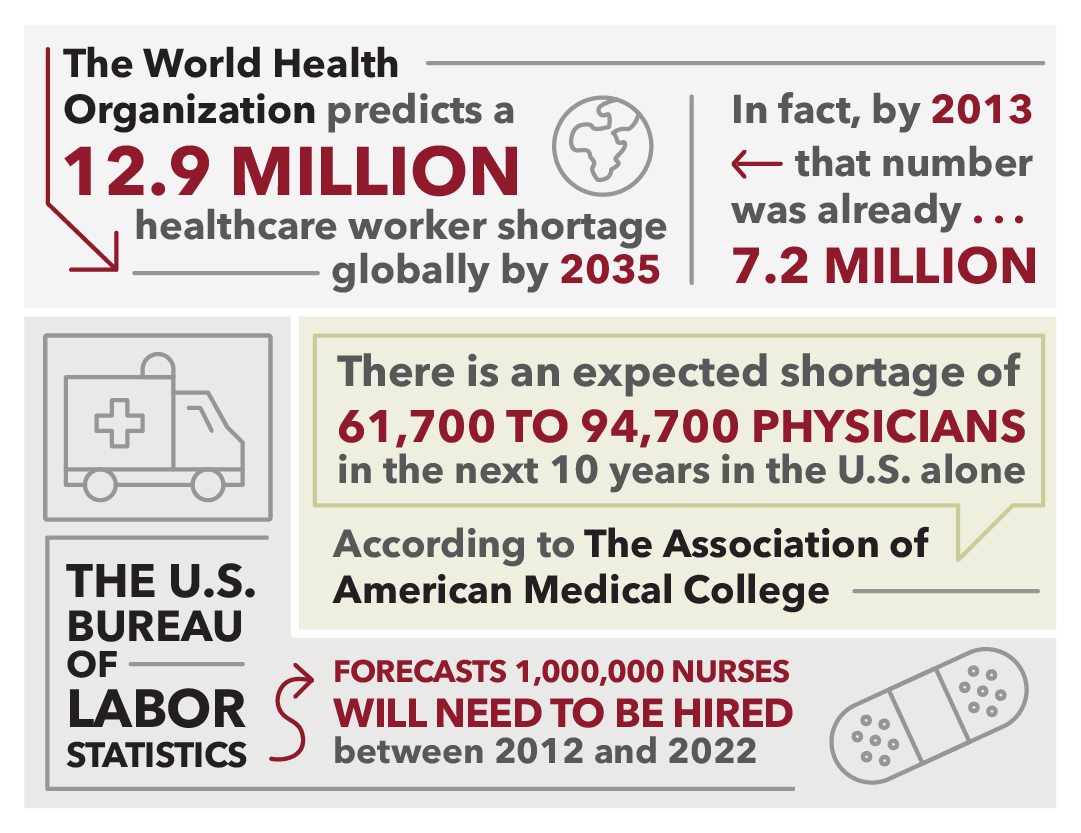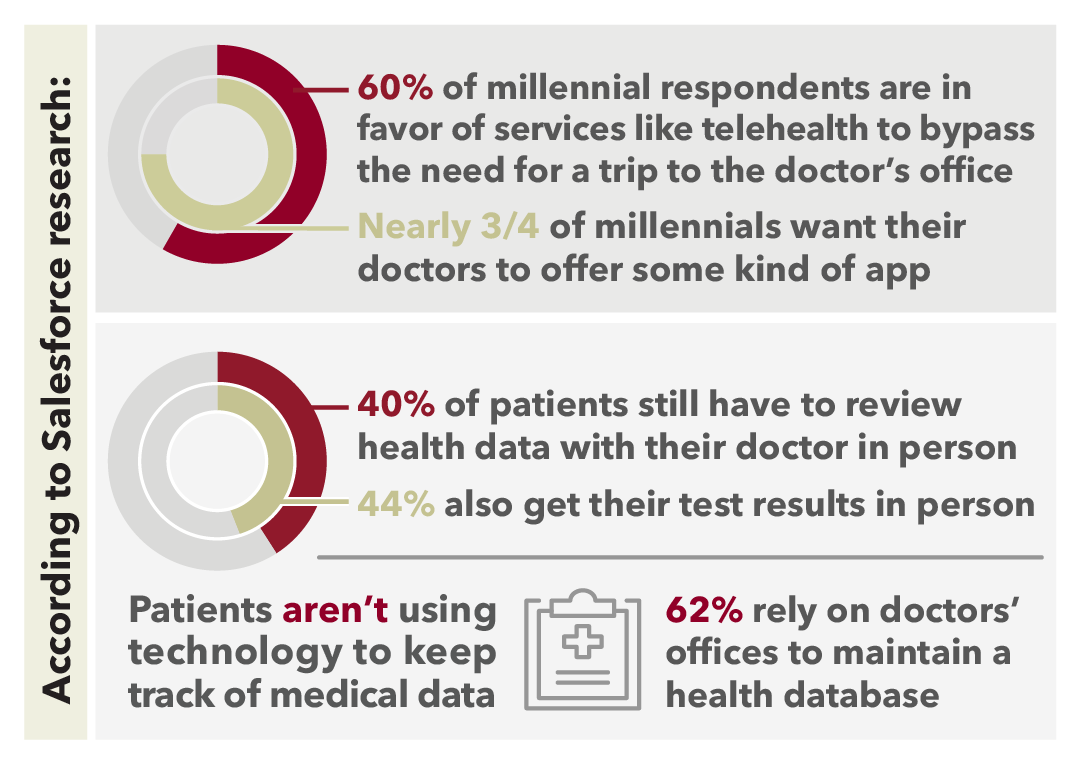Healthcare is a huge, growing, dynamic field; in 2016, the industry created more jobs than any other sector (Bureau of Labor Statistics). So many variables are in play: new technology (and technology threats), workforce issues, changing patient expectations and the switch to a digital recordkeeping environment. And then there are the political issues surrounding healthcare and insurance, which seem to change from week to week.
Whether you’re still a healthcare management student, or a top professional in the field, here are six trends to be conscious of today and in the future:
Ransomware
There’s little doubt that technology has improved the management and practice of healthcare. However, reliance on technology — in many areas, not just EHRs — exposes healthcare providers to an increased risk of cyberattacks, including data breaches and different kinds of malware. One particularly nefarious application of malware is ransomware, which allows malicious parties to encrypt all an organization’s data and demand payment to unencrypt it.
Many healthcare organizations have already experienced ransomware. The most significant incident came in May 2017, when ransomware crippled offices and hospitals belonging to Britain’s National Health Service. Because of the attack, many appointments were canceled and some patients needed to be rerouted to different healthcare facilities.
Experts say healthcare providers are frequently targeted because ransomware is relatively easy to deploy and that hospitals, considering the data involved, have little choice but to pay.
To protect against ransomware, healthcare organizations have to play defense and offense. IT professionals need to stay abreast of the latest threats and fortify computer networks and data. And healthcare providers need to train their employees to identify suspicious emails, websites and attachments so that they don’t inadvertently download malicious software and distribute it to the entire network.
Workforce Shortage
A major challenge healthcare providers are already facing is finding and retaining skilled workers. This situation is expected to worsen as the labor pool tightens and the need for healthcare services increases.
Experts are still looking into this issue, but there’s a general consensus that more needs to be done to reach out to students and demonstrate to them that all aspects of healthcare — operations, nursing, doctors, administrators — are worthwhile career paths. In addition, healthcare providers must make sure that employees’ needs and wants are being met, as to reduce frustration and turnover.
New Technologies
In a recent report, PricewaterhouseCoopers highlights technology trends that may change the way healthcare is delivered. Some of the highlights are:
- Artificial intelligence may be able to make medical decisions using sophisticated algorithms, providing expert opinions when a qualified professional is not available.
- Augmented reality and virtual reality can help medical professionals and patients visualize health issues, and may play a large role in training for doctors and nurses.
- Unmanned aerial vehicles can improve the supply chain of medical supplies and drugs when it is necessary to respond to a disaster.
- 3D printing can provide personalized implants and prosthetics.
Connected Patients
As millennials age, they have come to expect a higher level of electronic connectivity from their healthcare providers, according to a 2015 report by Salesforce.
Political Issues
The only thing sure about the future of healthcare insurance in this company is that you can’t be sure of anything. It is still undetermined if, and how, the Republicans’ American Health Care Act of 2017 will fully replace the Democrats’ Affordable Care Act, which is commonly called Obamacare. Decisions about federal funding for Medicaid may take years to work out.
Electronic Health Records
For several years, a nation-wide initiative has been underway to move healthcare records away from paper. The benefits of electronic health records (EHRs) are widely known, and many medical facilities have already made the time-consuming switch.
The Office of the National Coordinator for Health Information Technology identifies five stages in EHR adoption: understanding contracts, selection, adoption and implementation, optimization and (when necessary) migrating data. It is tempting to think that the work is done after implementation, but it is not. In the optimization stage, the organization evaluates what went well — and what didn’t — during implementation, so that it can celebrate successes and identify potential pitfalls for future expansion. It will then look at individual workflows in the EHR process and identify ways to improve them, streamlining the steps to save time and money without sacrificing quality. Scorecards are available to help healthcare providers evaluate the quality of the information that is recorded and shared.
When an organization outgrows its existing EHR, it must then evaluate options for a new electronic healthcare records provider. In this stage, it is critical that the new provider can migrate the existing data into the new EHR. This should be considered carefully during the selection process, and migration capabilities should be addressed in the contract.
Today, using EHRs productively can pay off. The Medicaid and Medicare EHR incentive programs are now providing economic incentives for healthcare providers that can show that they are using their EHRs effectively to coordinate patient care. Information about this meaningful use initiative can be found on the government’s Health IT website.

